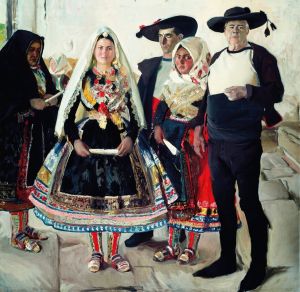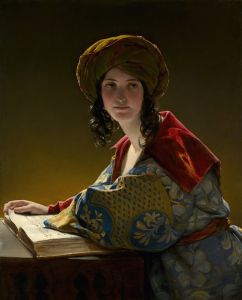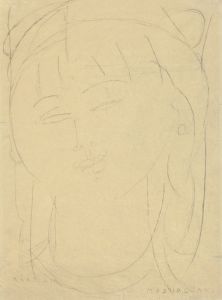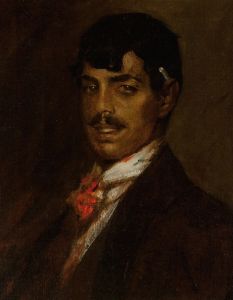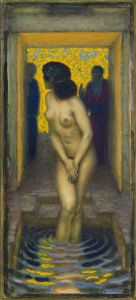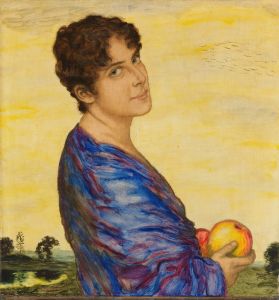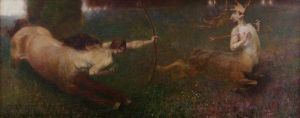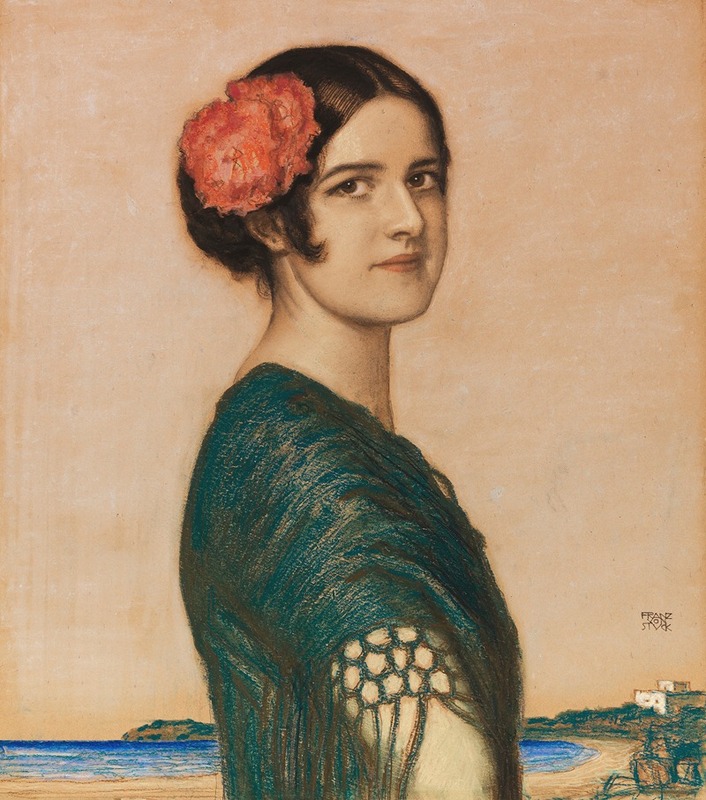
Tochter Mary als Spanierin
A hand-painted replica of Franz von Stuck’s masterpiece Tochter Mary als Spanierin, meticulously crafted by professional artists to capture the true essence of the original. Each piece is created with museum-quality canvas and rare mineral pigments, carefully painted by experienced artists with delicate brushstrokes and rich, layered colors to perfectly recreate the texture of the original artwork. Unlike machine-printed reproductions, this hand-painted version brings the painting to life, infused with the artist’s emotions and skill in every stroke. Whether for personal collection or home decoration, it instantly elevates the artistic atmosphere of any space.
Franz von Stuck, a prominent German painter, sculptor, and printmaker, created the painting "Tochter Mary als Spanierin" (translated as "Daughter Mary as a Spaniard") in the early 20th century. Stuck, born on February 23, 1863, in Tettenweis, Bavaria, was a key figure in the Munich Secession movement and is often associated with Symbolism and Art Nouveau.
"Tochter Mary als Spanierin" is a portrait of Stuck's daughter, Mary, depicted in Spanish attire. The painting reflects Stuck's fascination with exoticism and cultural themes, which were prevalent in his works. Mary, born in 1896, was a frequent subject in her father's art, often portrayed in various costumes and settings that highlight her youthful beauty and the artist's skill in capturing intricate details and textures.
The painting showcases Stuck's mastery of color and light, with Mary dressed in a traditional Spanish outfit, complete with a mantilla and a fan. The rich, dark tones of her clothing contrast with her pale complexion, drawing attention to her serene expression and the delicate features of her face. The background is typically subdued, ensuring that the focus remains on the subject.
Stuck's use of chiaroscuro, the technique of using strong contrasts between light and dark, is evident in this work. This method not only adds depth and dimension to the portrait but also enhances the dramatic effect, a characteristic feature of Stuck's style. The meticulous attention to detail in the fabric of Mary's dress and the intricate lace of the mantilla demonstrates Stuck's technical prowess and his ability to render textures convincingly.
Franz von Stuck's works often explored themes of mythology, allegory, and the human condition, and "Tochter Mary als Spanierin" is no exception. While the painting is a portrait, it also reflects the broader cultural and artistic trends of the time, including the fascination with different cultures and the romanticization of foreign lands.
Stuck's influence extended beyond his paintings; he was also a respected teacher at the Academy of Fine Arts in Munich, where he mentored many future artists, including Paul Klee and Wassily Kandinsky. His contributions to the art world were recognized during his lifetime, and he received numerous accolades, including the Knight's Cross of the Order of Merit of the Bavarian Crown.
"Tochter Mary als Spanierin" remains a testament to Stuck's artistic legacy, capturing a personal and intimate moment while also embodying the stylistic and thematic elements that define his oeuvre. The painting is part of the collection at the Villa Stuck, the artist's former residence and studio in Munich, which has been converted into a museum dedicated to his life and work.
In summary, "Tochter Mary als Spanierin" by Franz von Stuck is a significant work that exemplifies the artist's skill in portraiture, his use of light and shadow, and his interest in cultural themes. It continues to be appreciated for its artistic merit and its place within the broader context of early 20th-century art.





